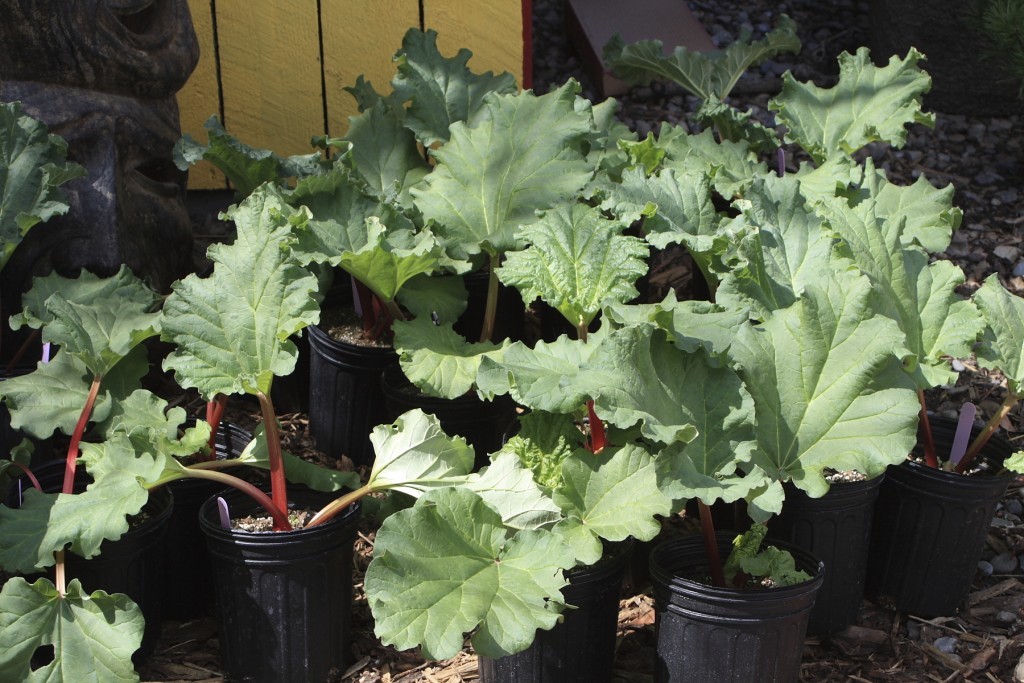Grow Rhubarb in Containers: Easy Steps

Are you dreaming of fresh, tart rhubarb pie but lack the garden space? Don't let that stop you! Growing rhubarb in containers is not only possible but also incredibly rewarding. Imagine transforming your balcony or patio into a lush, edible oasis. Let's dive into the world of container rhubarb and explore how you can cultivate this delightful plant with ease.
Why Grow Rhubarb in Containers?
Growing rhubarb in containers offers numerous benefits. It's perfect for urban gardeners with limited space, and it allows you to control the soil conditions more effectively. Plus, container gardening means you can move your rhubarb around to find the perfect spot for optimal growth.
Choosing the Right Container
Selecting the right container is crucial for the health and growth of your rhubarb. Opt for a large container, at least 18-24 inches in diameter and depth. This ensures ample space for the rhubarb's extensive root system. Materials like plastic, wood, or ceramic are all suitable, but make sure the container has adequate drainage holes to prevent waterlogging.
Preparing the Soil
Rhubarb thrives in well-draining, fertile soil. Aim for a mix that is rich in organic matter. You can create your own by combining equal parts of compost, potting soil, and perlite. This blend will provide the necessary nutrients and drainage for your rhubarb planting.
Planting Rhubarb
When it comes to rhubarb planting, timing is key. The best time to plant rhubarb is in early spring or late fall. Choose a healthy rhubarb crown from a nursery or garden center. Plant the crown about 2 inches deep in the soil, ensuring the buds are facing upwards. Water the soil thoroughly after planting.
Caring for Your Rhubarb
Watering
Rhubarb watering is essential for healthy growth. Keep the soil consistently moist but avoid waterlogging. A good rule of thumb is to water deeply once a week, adjusting based on weather conditions. Remember, rhubarb loves water but hates soggy feet.
Fertilizing
Rhubarb benefits from regular fertilization. Apply a balanced, slow-release fertilizer in early spring and again in mid-summer. This will provide the nutrients your rhubarb needs to grow strong and healthy.
Light Requirements
Rhubarb prefers full sun but can tolerate partial shade. Ensure your container is placed in a location that receives at least 6-8 hours of sunlight daily. This will encourage robust growth and abundant harvests.
Harvesting Rhubarb
Rhubarb harvesting is a rewarding experience. Wait until the second year after planting to begin harvesting. This allows the plant to establish a strong root system. When the stalks are about 12-18 inches long, gently twist and pull them from the base. Avoid harvesting more than a third of the plant at a time to ensure continued growth.
Common Issues and Solutions
Pests and Diseases
Rhubarb is relatively pest-resistant, but it can be affected by diseases like crown rot and leaf spot. To prevent these issues, ensure good air circulation around the plant and avoid overwatering. If you notice any signs of disease, remove affected leaves and treat with a fungicide if necessary.
Overwintering
In colder climates, you may need to protect your container rhubarb from frost. Move the container to a sheltered location or wrap it in burlap to insulate the roots. In milder climates, a layer of mulch can provide sufficient protection.
Conclusion
Growing rhubarb in containers is a fantastic way to enjoy this versatile plant, even with limited space. By choosing the right container, preparing the soil, and providing proper care, you can cultivate a thriving rhubarb plant. Imagine the satisfaction of harvesting your own fresh rhubarb and turning it into delicious dishes. So, why wait? Start your container rhubarb journey today!
FAQs
Can I grow rhubarb from seeds? Yes, you can grow rhubarb from seeds, but it's generally easier and faster to start with a rhubarb crown. Seed-grown rhubarb may also have variable characteristics.
How often should I divide my rhubarb plant? Rhubarb plants should be divided every 3-5 years to maintain vigor and productivity. This can be done in early spring or late fall.
Can I eat rhubarb leaves? No, rhubarb leaves are toxic and should not be consumed. Only the stalks are edible.
How long does it take for rhubarb to mature? Rhubarb typically takes about 2-3 years to mature and produce a significant harvest. Patience is key with this perennial plant.
What are some good companion plants for rhubarb? Rhubarb pairs well with strawberries, asparagus, and garlic. These plants can help deter pests and improve soil health, benefiting your rhubarb.


0 Response to "Grow Rhubarb in Containers: Easy Steps"
Post a Comment